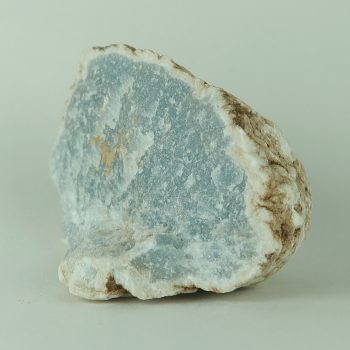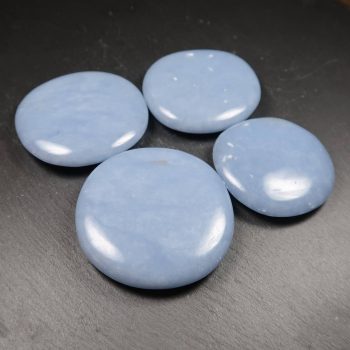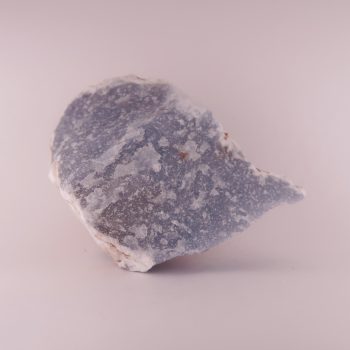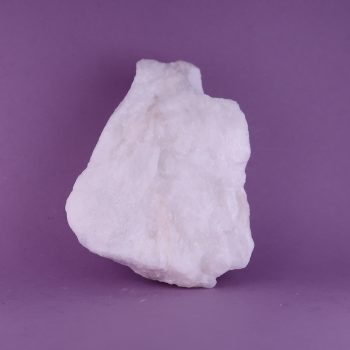Anhydrite
Anhydrite is an anhydrous calcium sulphate mineral, which is widely used in industry. Blue Anhydrite is often known as Angelite, a trade name.
Showing all 5 results
-

Angelite Mineral Specimens
Price range: £1.50 through £7.50 -

Angelite Palmstones
Price range: £5.00 through £7.00 -

Angelite Tumblestones
£2.00 -

Anhydrite from Casapalca Mine, Peru
Price range: £3.00 through £5.00 -

Anhydrite from Fauld Mine, Staffordshire
Price range: £5.00 through £6.00
Information about Anhydrite
Anhydrite typically forms as massive, granular, or fibrous aggregates, and less commonly as well-formed orthorhombic crystals.
It is often colourless, white, grey, or bluish, but can also exhibit shades of violet, pink, or red depending on impurities. It has a vitreous to pearly lustre, and when freshly broken, shows a distinctive splintery or uneven fracture.
On exposure to moisture, anhydrite may absorb water and convert into gypsum, which distinguishes it from its hydrated counterpart.
Uses and History
Anhydrite is used industrially as a drying agent, particularly in plasters and cements, due to its ability to absorb moisture. It is also employed in the manufacture of sulphuric acid, as a soil treatment to improve calcium content, and occasionally as a dimension stone. Though not a common gemstone, some transparent or coloured specimens are used ornamentally or in metaphysical circles.
Anhydrite was named in 1804 by Abraham Gottlob Werner, derived from the Greek “anhydros” (without water), in reference to its lack of water compared to gypsum.
It is a common evaporite mineral, forming in arid environments where bodies of seawater evaporate. Large deposits have been found in Germany, Poland, Mexico, and the USA. It is often found alongside halite, gypsum, and calcite in salt domes and sedimentary basins.
Mineralogy
White, grey, blue, pink, reddish or violet tints. Blue specimens may be labelled as angelite.
Hazards and Warnings
Mineral collectors should wash their hands after handling specimens, to avoid any exposure to potential toxins.
Almost all rocks, minerals (and, frankly, almost all other substances on earth) can produce toxic dust when cutting, which can cause serious respiratory conditions including silicosis.
When cutting or polishing rocks, minerals, shells, etc, all work should be done wet to minimise the dust, and a suitable respirator or extraction system should be used.
Translations
Arabic:
Hindi:
Portuguese:
- Anidrita
Bengali:
Indonesian:
Punjabi:
English:
Italian:
- Anidrite
Russian:
- Ангидрит
French:
Japanese:
- 硬石膏
Spanish:
- Anhydrit
German:
- Anhydrit
Korean:
Thai:
Gujurati:
Mandarin Chinese:
- 硬石膏
Urdu:
